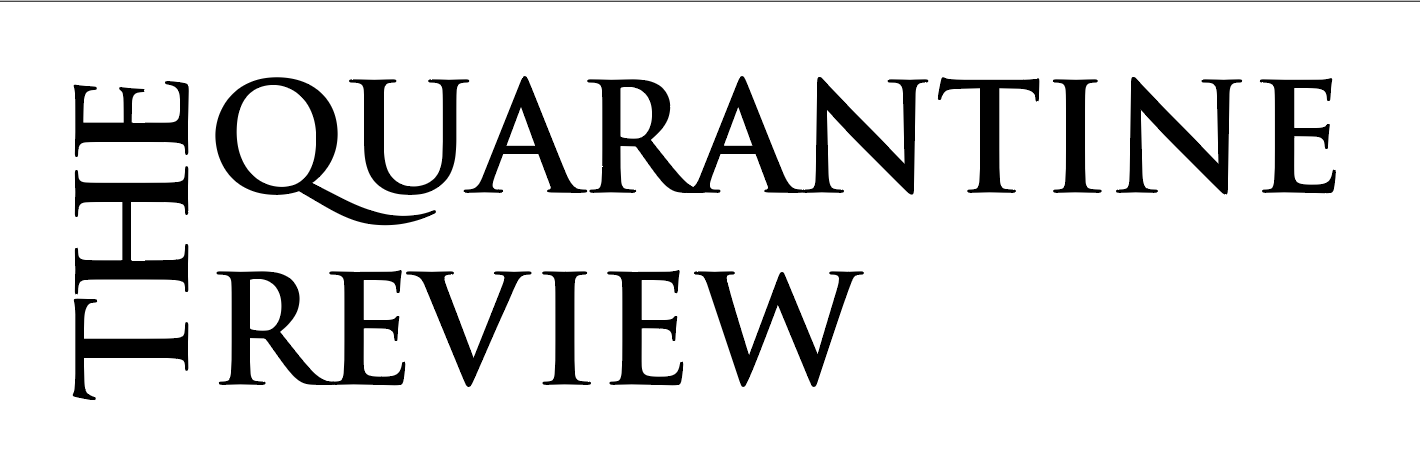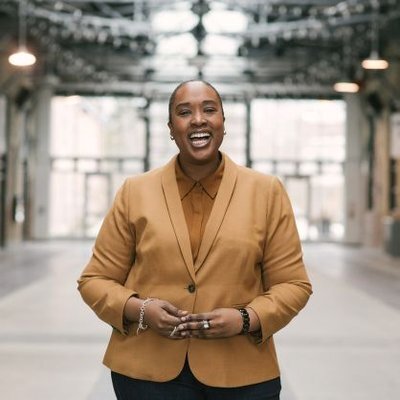Institutionalized Racism
Keisha N. Blain, Jill Andrew, and Tsedale M. Melaku on dismantling racial hierarchies as part of our ongoing series on white supremacy in the public sphere.
From willingness to have uncomfortable conversations about race to supporting grassroots movements and electing leaders that push for anti-racist policies, we hear from leading advocates and academics on how we must rethink our current society.
KEISHA N. BLAIN
Associate Professor of History, University of Pittsburgh; President, African American Intellectual History Society
You have highlighted that the US Civil Rights Movement in the ’50s and ’60s has been romanticized and glorified but that what we are seeing right now is a continuation of that struggle. Can you elaborate on this point? Can you talk a little bit about how the current oppressive systems and structures at large have not evolved since the 1960s?
Within mainstream narratives, the US Civil Rights Movement of the 1950s and 1960s represents a moment of success. In many ways, it certainly was successful. After hundreds of years of Black disfranchisement—and Black political activism and organizing in response to it—the United States underwent a significant transformation. Among other things, we can point to the Brown decision of 1954, which desegregated public schools and other public facilities. We can praise the tremendous work of the women who organized the Montgomery Bus Boycott in 1955, which forced the city to integrate public transportation. Even more, we can point to the passage of the Civil Rights Act of 1964 and the Voting Rights Act of 1965, which finally reinforced the rights and freedoms Black people had been granted under the US Constitution.
For all of those reasons—and more—we must look to this time period as a moment of transformation. And it’s fine to celebrate these gains. But my sense is that we often celebrate it a bit too much—and do so at our own peril.
“The Civil Rights Movement did not eradicate racism or white supremacy. It chipped away at the systems of oppression that had been in place for centuries, but it did not dismantle them.”
As many glorify this era in the history of the United States, others—and here I am thinking specifically about some white Americans—use the gains of the Civil Rights Movement to justify a post-racial narrative, which suggests that racism is far behind us. In fact, some white politicians have articulated this very idea—most recently, U.S. Senator John Cornyn who scoffed at the notion that systemic racism exists in the United States.
The reality is that the Civil Rights Movement did not eradicate racism or white supremacy. Although it chipped away at various systems of oppression that had been in place for centuries, the movement did not dismantle them. There is still a lot more work to be done and we should never lose sight of this.
Moreover, we should be careful not to imagine that the gains of the 1950s and 1960s have remained fully intact. Since the passage of the 1965 Voting Rights Act, which upheld African Americans’ right to vote as guaranteed by the 15th amendment of the US constitution, a number of state and local laws in the United States have worked in tandem to reverse this civil rights gain.
The 2013 Shelby County Supreme Court decision, which enabled states to pass restrictive voting measures, is one of the most brazen attacks on voting rights. Since Shelby, a string of state measures and laws have followed suit, seeking to undermine the Voting Rights Act. Shelby is just one recent example of how the gains of the Civil Rights Movement are being rolled back in the United States.
All of these concerns help explain why I resist the glorification of the US Civil Rights Movement even as I think it’s important to recognize its historical significance.
“No one is perfect and we will sometimes make mistakes, but we can be effective in the quest for radical change if we are open to listening and learning.”
I do think that the current uprisings are in many ways an extension of that struggle. Activists during the 1950s and 1960s were demanding the full rights and freedom of Black people in the United States. However, tackling desegregation and disenfranchisement proved insufficient in addressing all the needs of African Americans, especially those in urban areas who were crimpled by poverty, housing shortages, police brutality, and unemployment. These issues persist today and they are the source of current revolutionary movements that are sweeping the nation—and the globe.
What can we as citizens do to push for radical change in our political and legal systems, racial hierarchies that are spread across countries worldwide and not limited to the US?
The process of changing our political and legal systems requires extensive work, time and dedication. The first thing I always advise people who say they are committed to anti-racist work is that they need to take the time to listen and learn. Taking the time to learn from conscientious thinkers and activists will help to prevent certain pitfalls. The works of Angela Davis, Joy James, Barbara Ransby, Ruth Wilson Gilmore, and others are especially vital in this regard. These activists and theorists have spent decades organizing on the local, national, and international levels and they offer invaluable insights on how we can individually and collectively work to dismantle systems of oppression. No one is perfect and we will sometimes make mistakes, but I think we can be effective in the quest for radical change if we are open to listening and learning.
Secondly, I think it’s important for ordinary citizens to support political movements and organizations that are already involved in anti-racist work.
While there are many national and global organizations and movements we can and should support, I think it’s absolutely necessary to also endorse grassroots efforts and local groups that are often overlooked—yet most in need of help and support. Those who are committed to antiracism should get involved in these groups and organizations even as they work to confront racism on an individual level. This work is especially challenging, and it helps to be part of a community or network of other activists who can assist and guide as needed.
Third, I think it’s important to be involved in electoral politics. One key aspect of changing political and legal systems is ensuring that we elect the kinds of leaders and policy makers who can actually push for anti-racist policies and ensure they are supported and reinforced. Those who are interested should consider running for office with a clear purpose of entering these spaces to radically change them—rather than conforming to them.
Keisha N. Blain is an award-winning historian with broad interdisciplinary interests and specializations in United States history, African American History, the modern African Diaspora, and Women’s and Gender Studies. She is an Associate Professor of History at the University of Pittsburgh and President of the African American Intellectual History Society (AAIHS). Her research interests include Black internationalism, radical politics, and global feminisms. Dr. Blain is the author of the multi-prize-winning book Set the World on Fire: Black Nationalist Women and the Global Struggle for Freedom and co-editor of three collections. Her next book, Until I Am Free: Fannie Lou Hamer’s Vision of America, will be published by Beacon Press in 2021.
JILL ANDREW
Member of Ontario Provincial Parliament, Toronto–St. Paul’s
We recently saw the mayor of Wilmot, Ontario share a reprehensible video on Facebook, arguing that there is “room for discussion” when tackling racism in the public sphere. If we saw this behaviour on an online comments page, we would classify it as trolling. What does it mean when we have people in positions of power opposing change?
What this mayor shared, that referenced “white lives matter,” is akin to anti-Black racism itself. Anyone who echoes the ideas of all lives mattering or white lives mattering at a moment in history where so many people across the spectrum are finally waking up to what many of us have known—that anti-Black racism and anti-Indigenous racism are alive and well—is absolutely attempting to derail movement for change.
“When an elected official decides to share a message that says white lives matter, they provide a very public platform to pedal hate under the cloak of free speech.”
This was a blatant show, in my opinion, of anti-black racism and an attempt to silence conversation. As either an activist or a politician, it is my job to call that kind of thing out, to name it for what it is, and certainly not to ignore it. We have to demystify this notion that by fighting for Black lives or fighting for Indigenous lives, we are somehow suggesting that white lives do not matter. That is not what any of us are suggesting, but frankly, that is not the point.
The point is to highlight the ways in which Black and Indigenous, and other racialized people are disproportionately and systematically impacted negatively in every institution under the sun.
When an elected official decides to share a message that says white lives matter, and tries to cowardly couch it under the guise of an “interesting perspective,” as was the case in this incident, they provide a very public platform to pedal hate under the cloak of democracy or free speech. It is an irresponsible action that ends up inherently taking the spotlight away from cohesive conversation on anti-Black racism and anti-Indigenous racism.
How can government make serious headway on race issues and challenging racism in society?
We have to decentralize power or we’re in trouble. We have a provincial government here that’s not listening, they’re not consulting with the broader base of Ontarians. It’s just not happening because if it was happening, we wouldn’t be getting the cuts to public health that we’ve had.
“We have to be at the table or we’re on the menu. That’s just what it comes down to.”
We wouldn’t be getting the cuts to healthcare and education, two of the biggest files that have been funded well below inflation. This government has to listen to all their constituents—not just the constituents in their ridings, but the entire province. We have to be at the table or we’re on the menu. That’s just what it comes down to. Our communities are tired of being eaten up and spat out and paraded as token when it serves the purpose of white establishments. We need to be at the table making policies, making decisions, holding people accountable, you know, not just being trotted out as decorations.
I think that there needs to be training, there need to be more conversations routinely around equity strategy. Provincially, we have to have an anti-racism directorate. What we have now is a skeleton. We need to have a government that talks about race, but not in a superficial way.
In the earlier days of the pandemic, we kept hearing about the need to regularly wash our hands. Yet for literally years, many First Nations communities have been denied access to clean water for drinking and washing, leading to illnesses. Denying clean water for just some people is racist. That is government turning their eyes away from the lived experience of people. And these are the kinds of things that the government has the ability to change overnight. We need to have real conversations about rates and the inequities that still persist across our province. And those conversations then need to turn into legislation. Actual legislation that makes the lives of Black and Indigenous people better.
Jill Andrew, is the MPP for Toronto-St. Paul’s and serves as the the Ontario NDP Culture Critic and Women’s Issues Critic for the Official Opposition. Andrew is also a member of the Ontario NDP Black Caucus, a first of it’s kind in Ontario legislative history. She is the first Black and Queer person to be elected to the Ontario Legislature and reportedly in Canada. Dr. Andrew is an award-winning educator and former columnist, equity and body-image advocate, speaker and writer.
TSEDALE M. MELAKU
Sociologist; Postdoctoral Research Fellow at The Graduate Center, CUNY
Joe Feagin referred to systemic racism as the “white racial frame” that undergirds our society. We see that frame reflected in the laws our governments make, the cultures our workplaces and academic institutes endorse, and in the news our media promotes. Where does one even begin to modify these promulgations that are steeped in racist hierarchies? Is step one teaching people about the white racial frame on a broader level?
Systemic Racism, as theorized by Joe R. Feagin, is deeply rooted in American institutions and provides insight on how whites are privileged over subordinated racial groups (Feagin 2006). His concept of the white racial frame allows us to see the entrenched nature of systemic racism.
Feagin notes that the white racial frame is a dominant white perspective that only views things from a white point of view, ignoring the perspectives and positions of racially subordinated groups.
As a result, racial inequality is maintained, reinforcing white privilege and power in white institutional spaces. For us to address the impact of white racial framing we must understand what it is and how it works. Feagin argues that this frame operates to propagate, consciously or unconsciously, images, racialized narratives, ideologies, emotions, stereotypes, and proclivities to discriminate that posit whites as superior to racially subordinated groups.
For example, in my research examining the experiences of Black women lawyers in law firms, the racial framing of Black people as intellectually inferior works to curtail their access to entry into organizations.
Also, for the very few that gain entry the racial framing of Black people as unqualified promotes the idea that the reason Black people are there is because of diversity measures. This feeds into white narratives of affirmative action, working to diminish the achievements of Black people and forcing them to exert added invisible, uncompensated labor to manage perceptions about their competence in what I conceive as the invisible labour clause.
In order for us to counter white racial framing, we need to educate ourselves about systemic racism and the hidden racist mechanisms that play upon the lived experiences of Black, Indigenous, People of Color (BIPOC).
We need to be honest and willing to have uncomfortable conversations about race and racism, and about how this white racial framing works to maintain privilege and power for white people. After sitting in this discomfort, white people need to be willing to interrogate their understanding of a world that continues to bestow privileges and benefits upon them, at the detriment of racially subordinated groups. This is just one way we can begin to challenge the white racial frame.
As a scholar who has written considerably on systemic racism in academia and other workplaces, you have discussed the burdens a white-centred society places on people of colour. You describe the inclusion tax as the additional resources that people of colour invest in just to confirm to white norms. Can you talk a little bit about the strains and consequences of the adherence to a white corporate culture?
In my book, You Don’t Look Like a Lawyer: Black Women and Systemic Gendered Racism, I introduce and advance the concept of the inclusion tax to further explain how the invisible labour clause manifests in white institutional spaces. Black women are required to perform added “invisible” labour to navigate their daily existence in law firms, and this is meted out in the form of the inclusion tax. The inclusion tax is the additional resources that Black women “spend,” to be allowed in white spaces. This includes time, money, emotional and mental energy exhausted to also either resist or adhere to white normativity. I have further developed the inclusion tax to specifically include emotional, cognitive, relational and financial labour.
One good example in describing how the inclusion tax is reflected in the experiences of Black women in white spaces, which is tied to white racial framing, is the persistence of white normative beauty standards imposed on Black women. Black women must navigate white corporate aesthetics to manage perceptions about their perceived abilities. Conforming to white aesthetics requires the recognition that Blackness is viewed as inferior in white spaces.
Systemic gendered racist notions of professional appearance work to curtail Black women’s access to training, professional development, mentor/sponsor relationships, networking opportunities and prospects for advancement. Deciding to wear natural, curly hair, for instance, triggers perceptions of racial inferiority that Black women must navigate in the workplace.
Having to engage in discourse surrounding black hair is actually race talk, and requires a significant amount of emotional and mental energy preparing for these interactions that often end with Black women navigating racial aggressions. This also feeds into the perceptions that Black people cannot occupy high status positions and are often mistaken for non-attorney staff, thus they must manage interactions where they are constantly made hypervisible and invisible in white spaces. This is reflective of the inclusion tax Black women must pay to be in white institutional spaces.
Tsedale M. Melaku is a Sociologist, Postdoctoral Research Fellow at The Graduate Center, CUNY, and author of You Don’t Look Like a Lawyer: Black Women and Systemic Gendered Racism (2019), which reflects the emphasis of her scholarly interests on race, gender, class, workplace inequality, diversity, and occupations. You Don’t Look Like a Lawyer focuses on how race and gender play a crucial role in the experiences of women of color in traditionally white institutional spaces. Dr. Melaku’s work has been featured in the Harvard Business Review, New York Times, Bloomberg Law, NBC Left Field, TODAY Show, and Fair Observer. She received her Ph.D. and M.Phil. in Sociology from The Graduate Center, City University of New York, and her B.A. in Sociology and Africana studies from New York University. Follow her on Twitter, @TsedaleMelaku or visit her website, www.tsedalemelaku.com.







